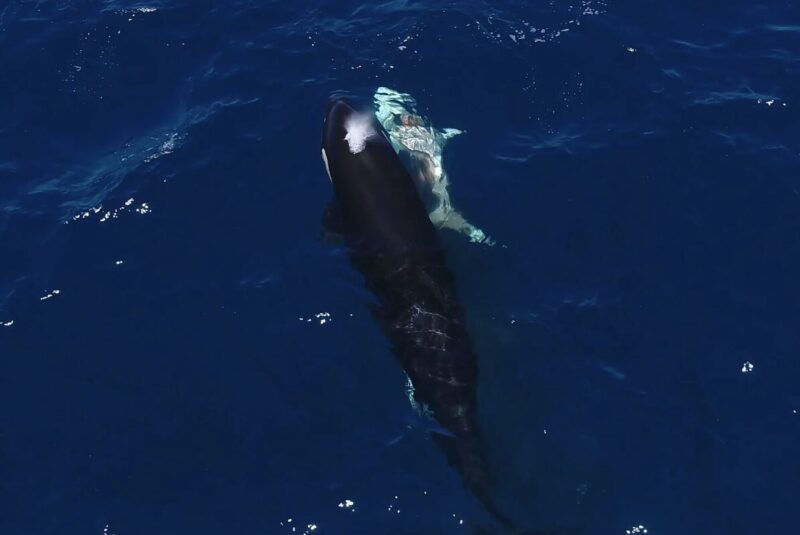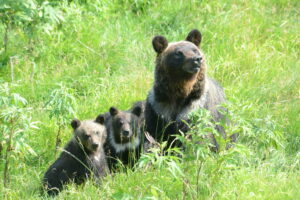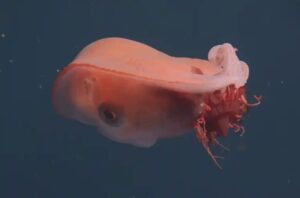Over the last few years, orcas have been making headlines around the world for their bold behavior. They’ve been ramming boats in Europe, taking down dolphins, and now they’ve been filmed deftly killing great white sharks.
Killer whales have previously been seen attacking sharks off the coast of South Africa, but these videos from the Gulf of California in Mexico show their precise hunting technique like never before. They flip young great whites onto their backs and then zero in on their favorite meal, the sharks’ nutrient-dense liver. Flipping the sharks over triggers tonic immobility, a kind of paralysis that leaves the sharks frozen and helpless.
“This behavior is a testament to orcas’ advanced intelligence, strategic thinking, and social learning,” said Erick Higuera-Rivas, lead author of the new study. “These hunting techniques are passed down through generations.”
This isn’t just a one-time trick. Scientists first documented it in 2020 when a pod led by a large male named Moctezuma immobilized and killed two great whites in quick succession. A camera captured both attacks.
In the first, drone footage shows five female killer whales hunting down a young great white and then sharing its liver between them. Moments later, they are on the attack again, and another juvenile shark meets the same end. Two years later, in the same region, a mixed group of orcas used the same technique — flipping them, paralyzing them, and hastily removing the shark’s liver.
“Drone footage is invaluable here,” Marine biologist Alison Towner was not involved in the current study but published earlier drone footage of orcas killing great white sharks in South Africa.
“It changed what we understood about these interactions,” she told CNN. “This new footage from Mexico lets us compare behavior across different orca groups and shark populations.”
Here, ‘playing’ dead becomes permanent
Why sharks display tonic immobility is a mystery. They are not the only species that do this. Most others display the behavior to try to escape predators by “playing dead.” Sharks seem to fall into this trance involuntarily when turned upside down, putting them at a serious disadvantage.
Higuera-Rivas believes that shark hunting in orcas might be far more common than we think, and that it could be due to climate change. As the Pacific Ocean warms, shark nursery grounds are expanding and young great whites are venturing into prime orca territory.
The young sharks are much easier prey for killer whales than fully grown great whites. Their smaller size means it is easier to flip them into their frozen state, and they have not yet learned to escape when a pod of orcas is in the vicinity.

Killer whales hunting a great white shark. Photo: Erick Higuera-Rivas
Interestingly, all the attacks occurred in August, leading Higuera-Rivas to speculate that juvenile sharks might have become seasonal prey.






